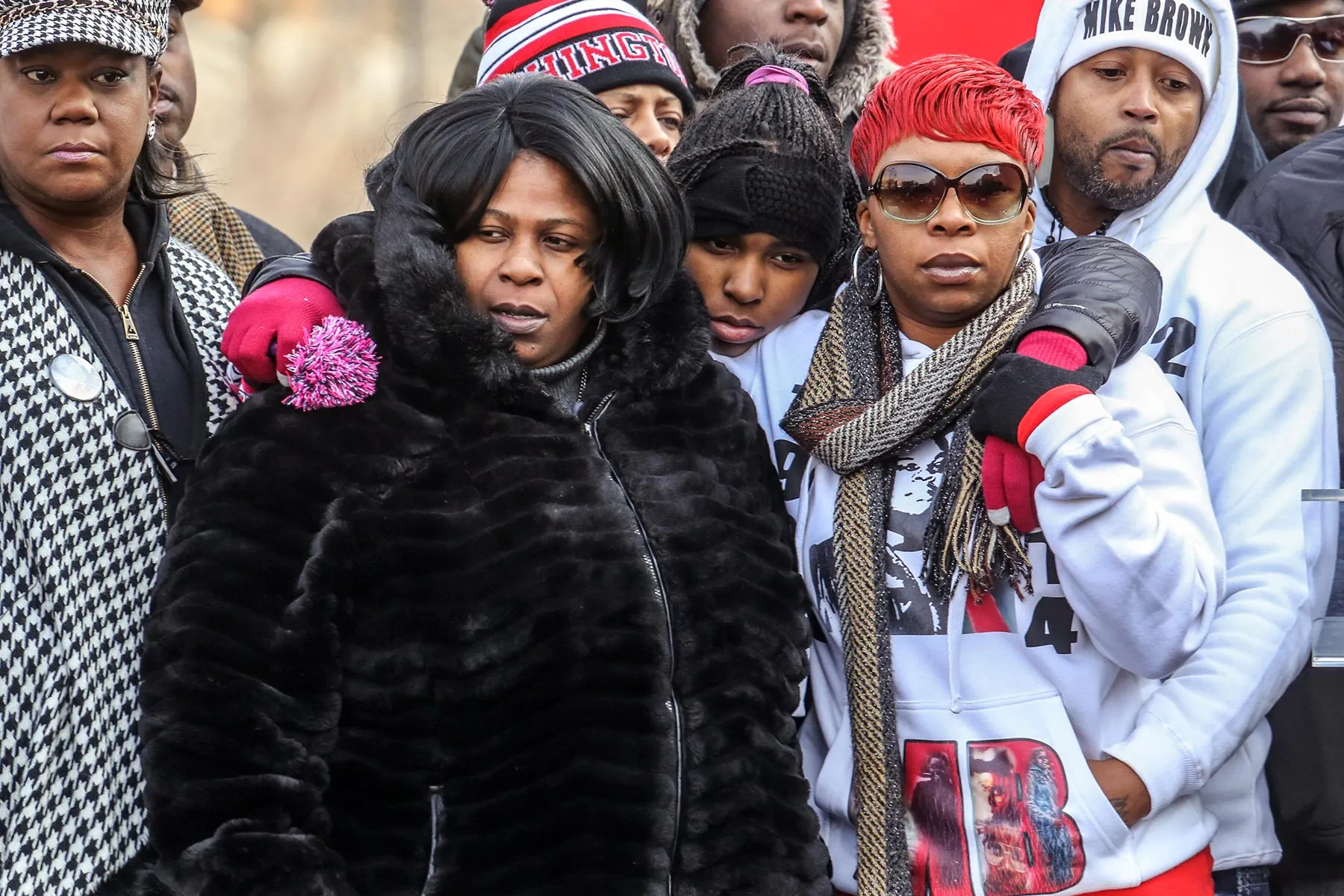
[ad_1]
Samaria Rice’s anxiety fluctuates but seems to reliably spike around her son Tamir’s birthday and on the anniversary of the day a policeman gunned down the 12-year-old.
It’s been more than 8 years since police killed Tamir Rice as he stood outside a Cleveland, OH, community center, holding a toy gun.
When Samaria Rice arrived at the scene Nov. 22, 2014, her youngest daughter, Tajai, 14, was in a squad car and her 15-year-old son, Tavon, was in handcuffs after running to the scene. She had to choose between staying with them or going with Tamir to the hospital.
She chose the latter. Doctors declared Tamir dead the next day. Her daughter, Tasheona, then 18, and Tavon at first responded with anger and rebellion, and over time, as each struggled in their own way, Rice and her children were diagnosed with PTSD.
The family has still not fully recovered. For years after Tamir’s death, Tajai, who was inseparable from Tamir, wouldn’t eat certain snacks like cheese pizza, cereal, or peanut butter and jelly sandwiches because they reminded her of her brother.
The kids, all in their 20s now, have high blood pressure like their mother. Rice has flashbacks and finds herself “zoning out.”
“We’re different people now,” she says. “When the death of my son happened, my children started making bad decisions. PTSD is a direct hit, and things happen instantly.”
“It comes with a lot of depression, anxiety, crying spells, and sleepless nights. Your mind races,” she says.
It Affects Entire Communities
The damage doesn’t stop with families like the Rices. A growing body of research shows fallout from community violence, including aggressive policing, extends well beyond victims and their families. It can ripple through entire communities, taking a toll on both mental and physical health.
“Policing definitely is a health issue,” says Andrea Headley, PhD, an assistant professor at Georgetown University’s McCourt School of Public Policy.
Black and brown people, who tend to have more negative interactions with police, can experience “vicarious” trauma just knowing that people who look like them might be targeted, says Headley.
Communities with more active and aggressive policing often face other ills – unemployment, less investment, faltering education systems among them – and the cumulative stress has been shown to increase the risk of ailments like diabetes, she says.
Adverse childhood experiences, which include dealing with racism and seeing a relative incarcerated, are linked to higher rates of hepatitis, ischemic heart disease, liver disease, substance abuse, and chronic obstructive pulmonary disorder, research shows. It’s hard to make a direct causal link, but scientists are trying to unpack just how these factors work together and which ones are most responsible for bad health outcomes.
The Long Road: Living With Trauma
Sirry Alang, PhD, an associate professor in the Department of Health And Human Development at the University of Pittsburgh’s School of Education, has studied five pathways linking police brutality and health outcomes among Black people: fatal injuries; emotional and physiological responses within communities; racist public reactions; financial strain; and systemic disempowerment.
When a person sees themselves in, say, George Floyd or Eric Garner, or sees their child in Tamir Rice or Michael Brown, triggers are common, Alang says. A routine traffic stop or the mere sight of an officer causes knots in the stomach as the body releases cortisol and other hormones designed to prepare for danger, which overworks systems and causes a “weathering” effect on the body, she says. Negative police encounters can also taint a person’s view of other authorities and institutions, including health care, she says.
“If you have had a negative encounter with police, you’re less likely to get the flu shot, preventative care, find therapy when you’re stressed,” Alang says. “To you, the system is the system; the man is the man.”
Rice has experienced it all. The city at first blamed Tamir for the shooting. (The then-mayor soon apologized for this.) Rice heard people question why her son’s replica firearm was missing its bright orange safety tip, while others pointed out Tamir was large for his age, as if either could explain an officer exiting his car and opening fire on a 12-year-old inside 2 seconds, she says.
Her activism and fight for accountability (no officer was charged, but the city paid her family $6 million) have taken her away from work, as have her therapy sessions to deal with the emotional fallout. She continues to be dismayed by politicians who pay lip service but do little to address the issues, she says.
“Those are anger points and trigger points for me, to see law enforcement continue killing without accountability.”
Her three children are parents themselves now, and Rice can’t help but think they’d be further along in their dreams for life had they not lost their brother to police violence. As kids, Tavon wanted to be a carpenter or to work with cars, while Tasheona wanted to be a neonatal nurse – dreams deferred after Tavon spent some time in jail and Tasheona became a mother in her late teens.
Rice, too, struggled mightily after Tamir’s death. She and Tajai, who lost significant weight after her brother’s killing, briefly lived in a shelter before donations allowed Samaria to find them an apartment, she says.
They’re getting help and doing better now. Tasheona is about to begin studies to become a dental assistant, and Rice convinced Tavon to leave Ohio for a fresh start. He plans to attend barber school in Louisville, KY. Tajai has started eating cheese pizza and cereal again, though she hasn’t gone back to PB&J, her mother says.
Today, Rice stays busy with the Tamir Rice Foundation, fighting for reform, lifting the always-smiling youngster’s legacy, and meeting with other families who’ve lost loved ones to gun violence.
“You can lose your mind in a situation like this,” she says. “Some of these parents don’t come back after going through what we go through.” That’s why her foundation work is so close to her heart.
These types of efforts can make a real difference in the community, says Headley from Georgetown.
Yet she warns against one-size-fits-all approaches. Communities and police departments differ, as must prescriptions for reform. It may require a suite of changes such as:
- Hiring more women and people of color as officers
- Focusing more on known criminals than entire communities
- Using mental health professionals rather than police where appropriate
- Decriminalizing petty nuisances such as loitering
- Investing in communities (for example, improving public spaces, reducing poverty, providing educational resources, creating jobs, and developing after-school programs)
“We need to take a step back and understand all the ways these different parts of the policing system contribute to the problems,” Headley says.
“There are things that we can do if we choose to do them, but the will has to be there.”
[ad_2]
Source link






